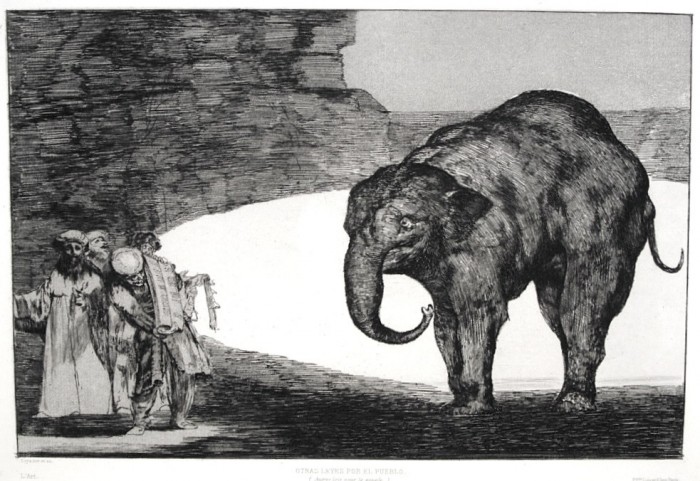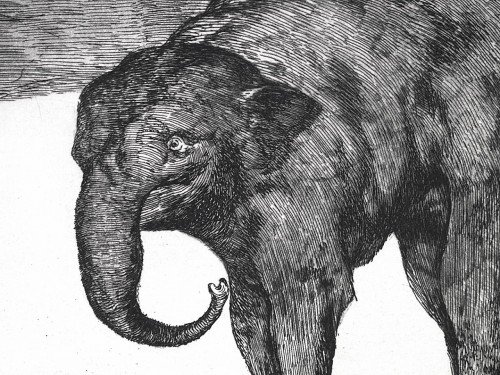Who Will Bell the Cat (Quien se Pondra El Cascabel at Gato?)

Francisco Goya (1746-1828), Who Will Bell the Cat (Quien se Pondra El Cascabel at Gato?); also Animal Folly (Disparate de Bestia), etching, c. 1820, burnished aquatint and drypoint. Reference: Harris 268, Delteil 222. In excellent condition, the full sheet, on fine laid paper, 9 1/2 x 13 3/4, the sheet 12 x 17 1/4, archival window mat.
Published by L’Art with the title “Otras Leyes Por el Pueblo and below “(Autres loie pour le peuple)” [other laws for the people] with “Goya inv. et sc.” and “L’Art” to the left and “Fcois Lienard, Imp Paris” to the right. One of the four additional plates prepared for the Proverbios Series but unpublished until the late nineteenth century (1877). (There were initially 18 prints in the set, which was first published in 1864.) One working proof of Quien se Pondra is known, then some posthumous trial proofs before letters prior to the edition.
Provenance: ex Collection Frederick Garnet Rice (Lugt Supplement 1042a), his stamp verso.
A fine impression, with the aquatint contrasts clear, and the drypoint scratches vivid as well.
Harris notes that the “elephant is copied from a pen and ink drawing which represents two elephants and their keeper. There are etched traces of the second elephant in the rocks above the Moors.” In this impression these etched traces are quite clear.
The generally accepted interpretation of this print is that the elephant, representing the people, is being seduced into accepting laws which would sap its strength and put it at the mercy of the ruling class. The fable of the mice who held a meeting to discuss what to do with the cat (they decided to bell it, but then had to decide who would take on the task) was in an anthology that was almost surely known to Goya. In the composition one of the cowering Moors holds a book (laws?) while another holds out a bell harness in the direction of the massive animal.
